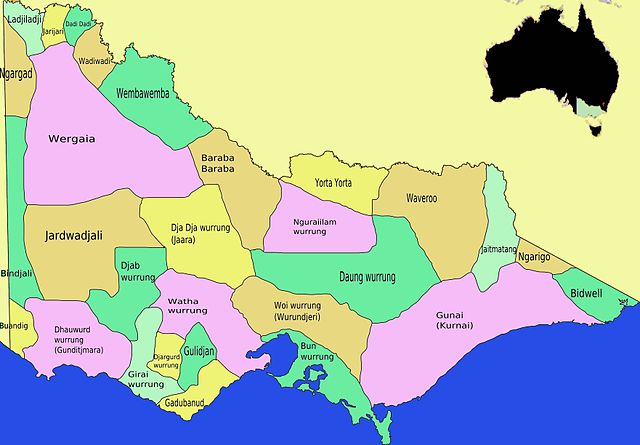Top Qs
Timeline
Chat
Perspective
Bidhawal language
Australian Aboriginal language From Wikipedia, the free encyclopedia
Remove ads
The Bidawal language was an Australian Aboriginal language, either a dialect of or closely related to the Kurnai language, formerly spoken by the Bidhawal.[2] However, it had borrowed a number of words referring to mammals, birds and celestial bodies from Ngarigo, as well as a smaller number of words from Thawa and Dhudhuroa.[2] The Bidawal called their own dialect mŭk-dhang (or muk-thang) ("good speech"), and that of the neighbouring Kurnai gūnggala-dhang. The Kurnai, however, called their own dialect mŭk-dhang, and that of the Bidawal kwai-thang ("rough speech").[3][a] According to Alfred William Howitt, Bidhawal is a mixture of Kurnai, Ngarigo and Yuin.[4]
Based on historical spellings Corey Theatre regularized the from as Pirtawal with a retroflex stop.[5]
Historical spellings of Pirtawal[5]
Remove ads
Phonology
Grammar
Pronouns
Pronouns are inflected for person, number, and case. There are no gendered pronouns.
The pronouns for Kurnai (Gūnggaladhang) are vary similar to those for Bidhawal.
Remove ads
Notes
References
Sources
Wikiwand - on
Seamless Wikipedia browsing. On steroids.
Remove ads

